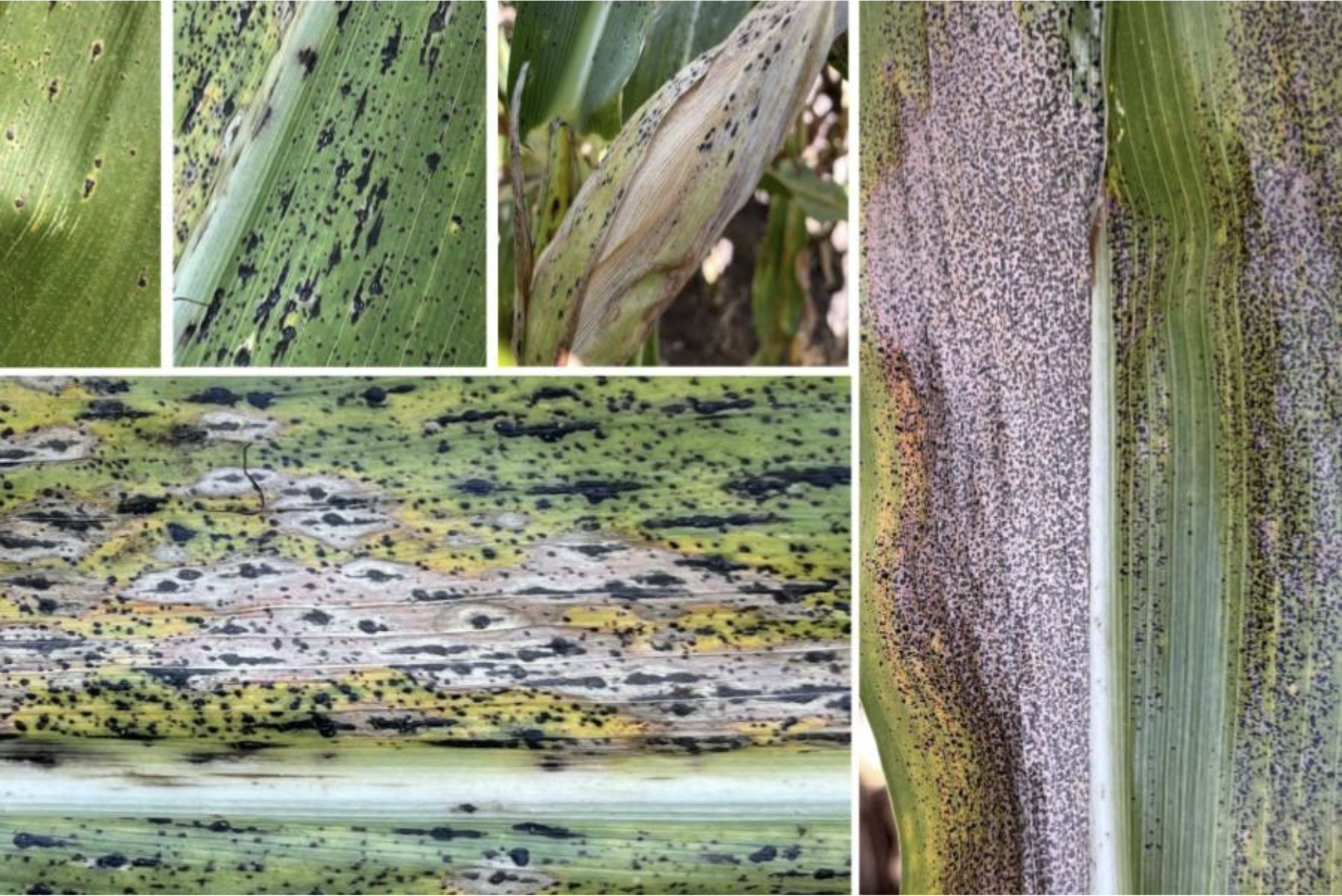May 10, 2023
A new disease called corn tar spot is causing significant yield loss in the United States. Corn tar spot was first reported in the U.S. in 2015 and has since spread to multiple states, including Minnesota in 2019. The lack of information about the pathogen and epidemiology of the disease has made it difficult to diagnose and treat properly. Corn tar spot also appears similar to other leaf diseases and abiotic disorders, making proper identification even more challenging.
Now, MITPPC researchers, in collaboration with partners at Purdue University and GROWMARK, have published a guide in the journal Plant Health Progress to help farmers and researchers recognize the symptoms and signs of the disease. It provides a framework for correct diagnosis and management.

Key aspects for diagnosis:
- Tar spot symptoms appear initially as flecking and mild chlorosis (yellowing) on leaves, stalks and husks.
- The black tar spots form after the flecking or yellowing. These spots are the fungal structures called stromata, which are embedded in the plant tissue. They are elongated, raised and can not be removed by rubbing them.
- The symptoms and signs can develop at any corn growth stage throughout the summer, but typically develop most severely in the late summer.
“Tar spot is a significant disease of corn and can be challenging to manage. Proper and timely diagnosis is critical for managing tar spot and reducing corn yield losses. If you are concerned about tar spot in your corn because you see black spots on the foliage, and the spots cannot be removed by simple rubbing, please consult the diagnostic guide for more guidance or contact the Plant Disease Clinic in the Department of Plant Pathology at the University of Minnesota.”
- First author José E. Solórzano, a Ph.D. student in the Department of Plant Pathology
For more information about this research, visit the project page: distribution, risks, and management of corn tar spot. This research was funded by the Minnesota Invasive Terrestrial Plants and Pests Center (MITPPC), supported by the Minnesota Environment and Natural Resources Trust Fund as recommended by the Legislative-Citizen Commission on Minnesota Resources (LCCMR).
Resources
- Tar Spot of Corn: A Diagnostic and Methods Guide
- Supplementary material of the corn tar spot diagnostics guide in Spanish
- Related research projects:
- Plant Disease Clinic website
- Original research brief from University Relations